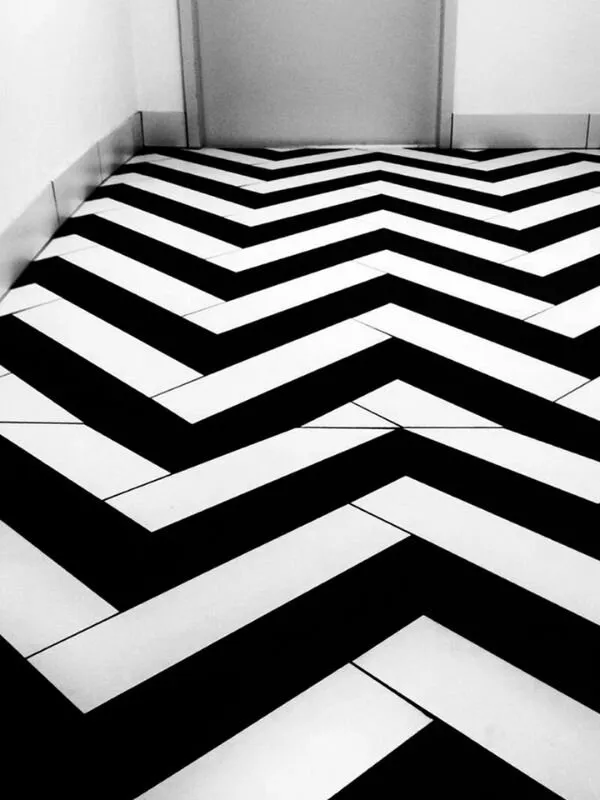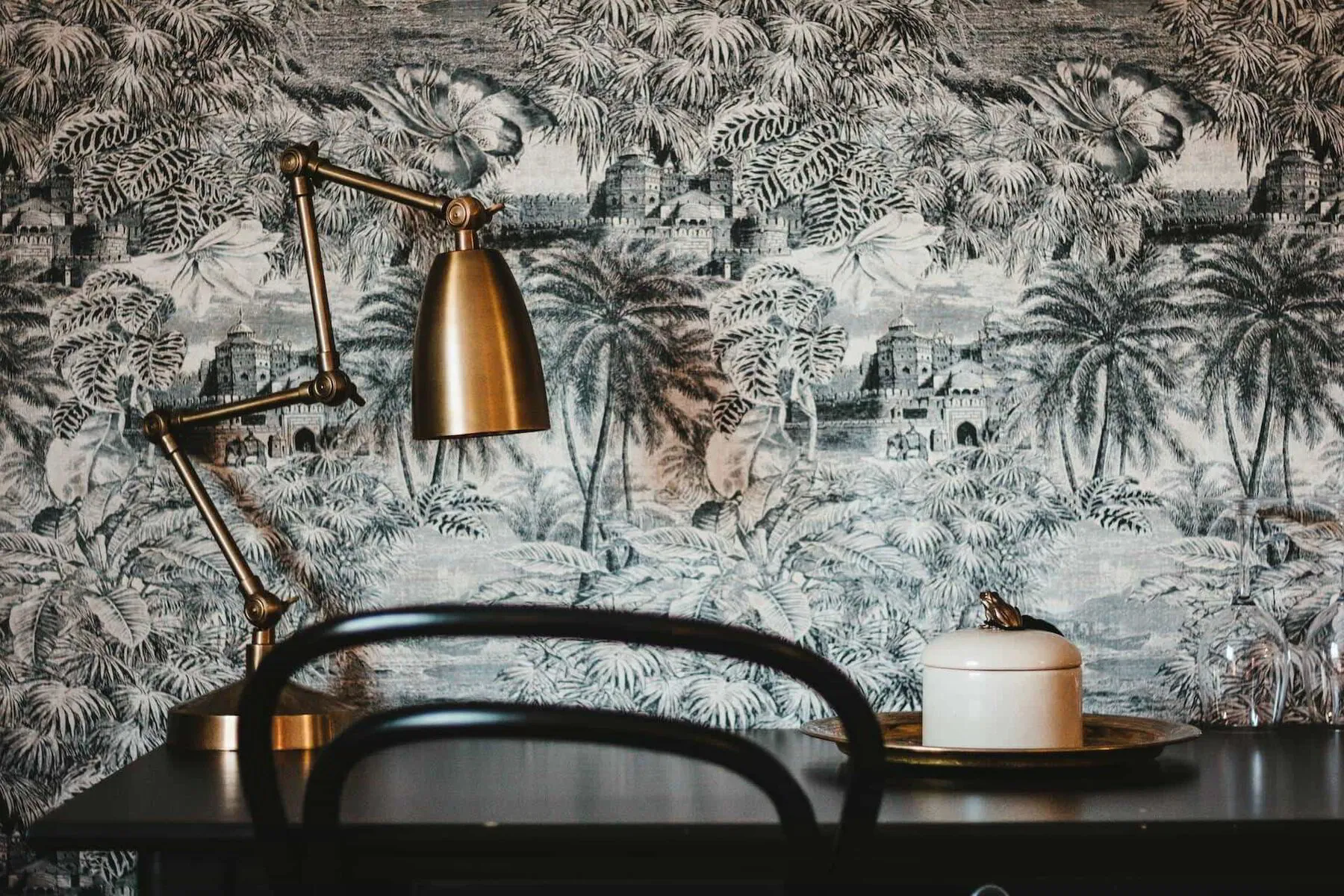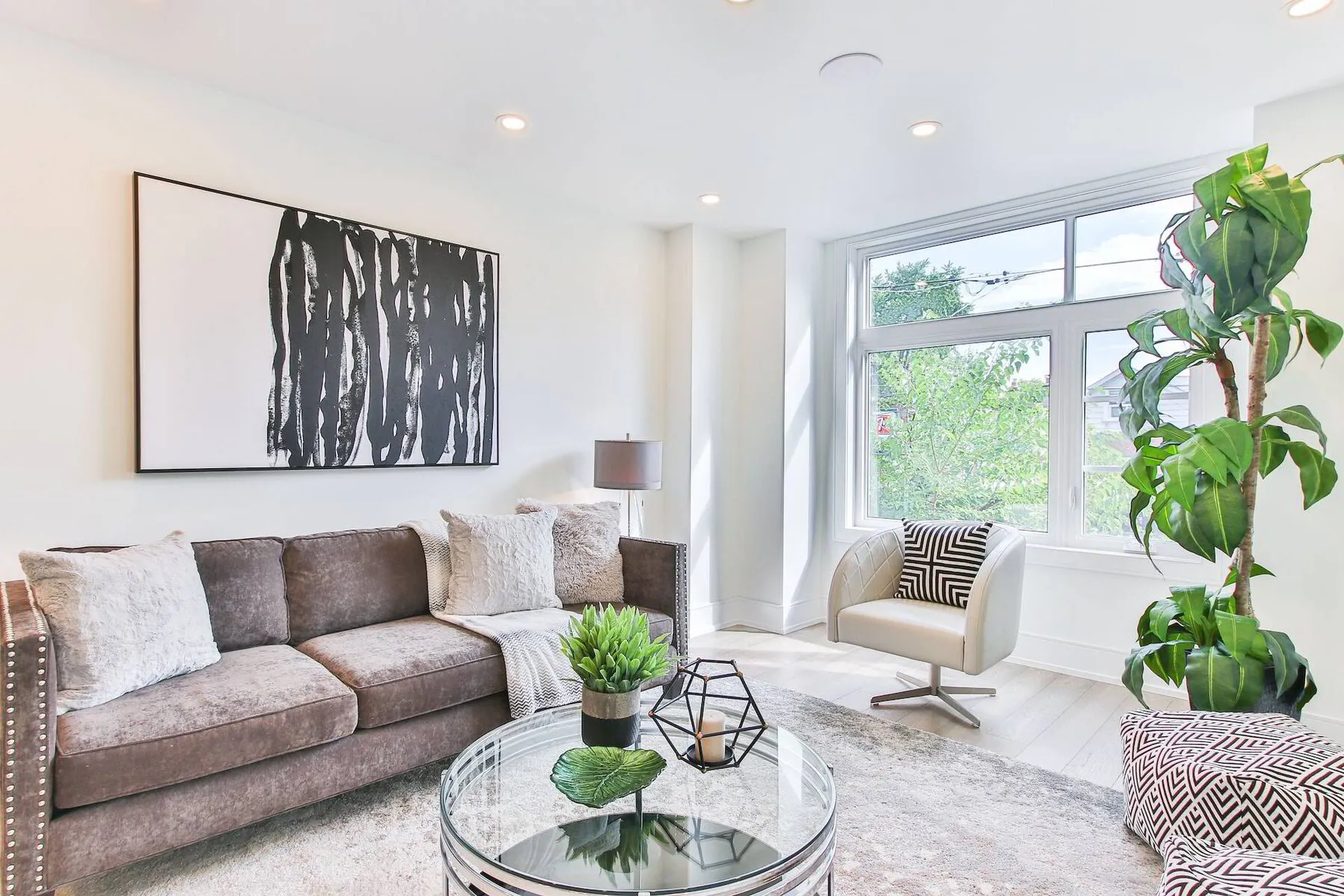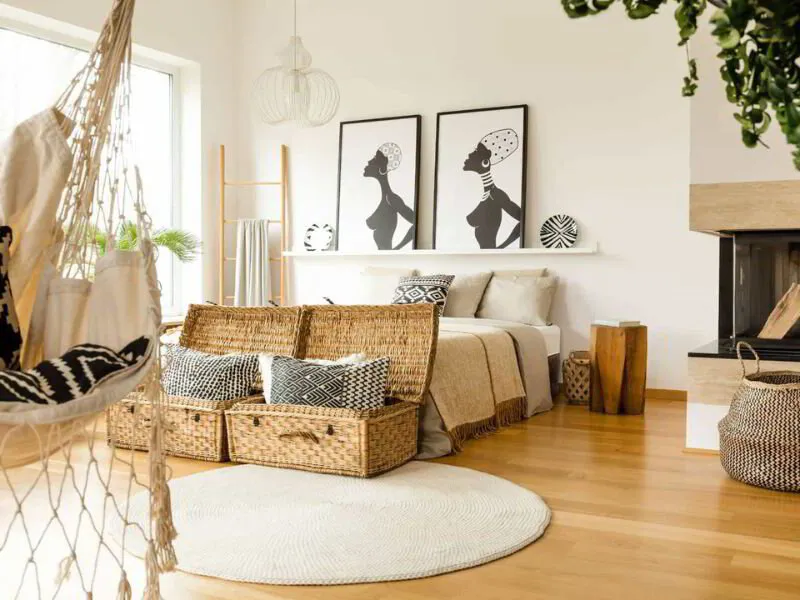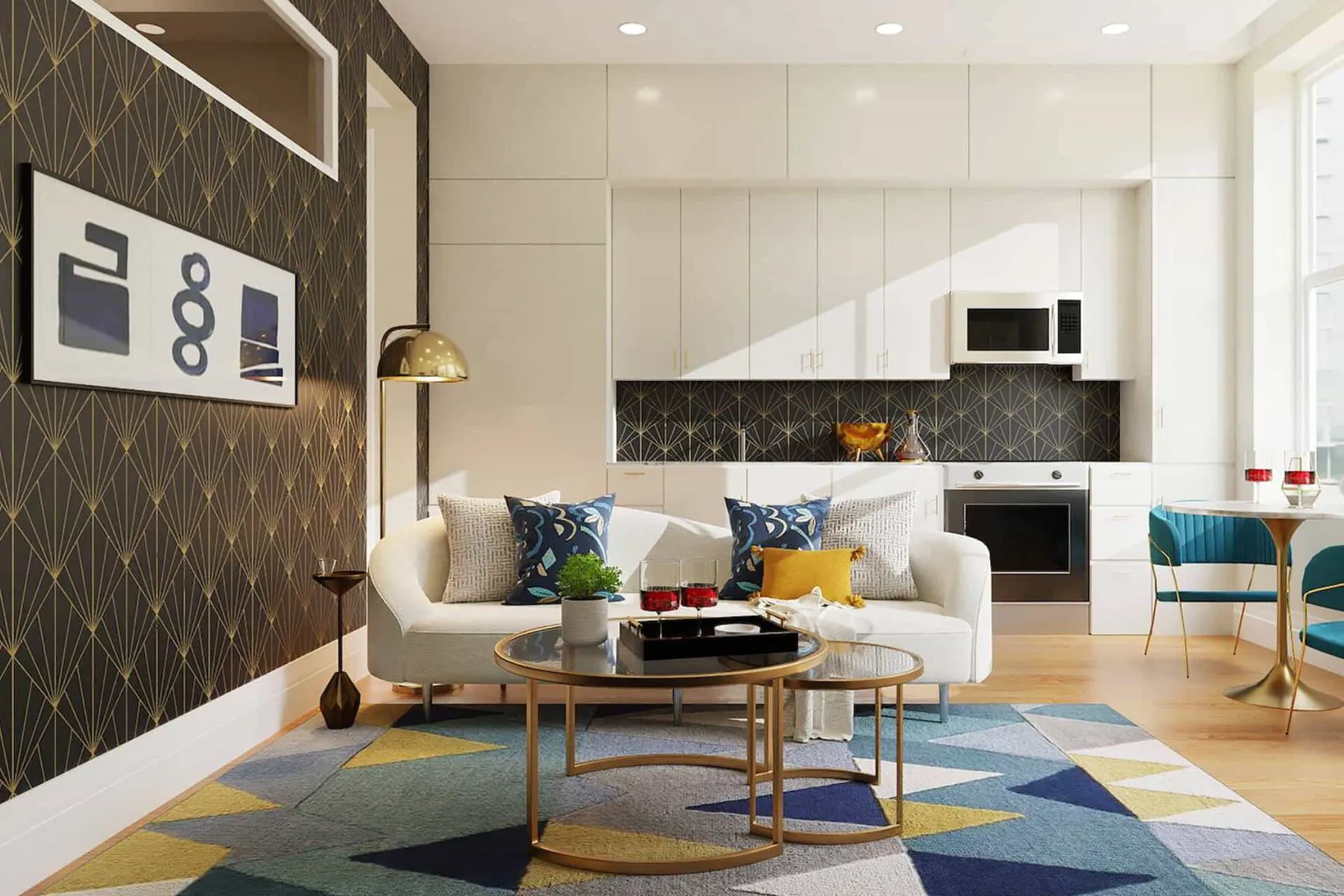⚜️ The Impact of Pattern In Interior Design
When it comes to designing the interior of a home or workspace, pattern is a powerful tool that can invoke a range of emotions and set the tone for the space.
From bold geometric designs to subtle organic motifs, patterns can add interest, depth, and texture to interiors.
In this article, we will explore the impact of pattern in interior design, the different types of patterns, how to choose the right one for your space, and how to both mix patterns and incorporate them into different design elements.
📘 Key Takeaways
- Patterns in interior design refer to repeating elements, such as shapes or colors, that add visual interest and create flow and rhythm in a space.
- The right pattern can enhance the spatial perception of a room, making spaces appear larger or smaller based on scale and proportion.
- Patterns evoke emotions and set the atmosphere, ranging from the tranquility of nature-inspired motifs to the energy of bold geometric designs.
- There are various types of patterns, including geometric, organic, and abstract, each adding a unique touch to interiors.
- Incorporating patterns into design elements like wallpaper, textiles, and decorative accessories can transform a space, reflecting individual tastes and personality.
What is Pattern in Interior Design?
In interior design, a pattern refers to a repeating element in a design, such as shapes, colors, or textures. It adds visual interest to a space and produces obvious directional movements, creating a sense of flow and rhythm.
Patterns can range from subtle to bold and can be used on various elements such as wallpaper, rugs, curtains, and pillows.
Using patterns carefully in interior design can elevate a space and create a cohesive and harmonious atmosphere.
The Impact of Patterns on Interior Spaces
One of the most significant impacts of patterns when designing interiors is their ability to create visual interest.
Patterns can counteract monotony and breathe life into a room.
Choosing the right pattern can also enhance the spatial perception of a room.
By playing with scale and proportion, patterns can create the illusion of more significant or smaller spaces.
Additionally, patterns can evoke emotions and set the atmosphere for a room, from the calmness of nature-inspired patterns to the vibrancy of bold and bright geometric designs.
Creating Visual Interest
Patterns can add depth and texture to a space, making it more visually appealing.
A plain or monochromatic room may lack personality, but adding a well-designed pattern can create a striking focal point.
Employing patterns smartly can add layers to the room and create a sense of warmth, making the room feel cohesive and more inviting, and comfortable.
For instance, if you have a room with a neutral color palette, you can add a patterned rug to create interest.
A rug with a bold, geometric design can complement the muted tones and add a pop of color to the room.
You can also use patterned throw pillows, curtains, or wallpaper to add texture and depth to a space.
Enhancing Spatial Perception
Picking the right pattern can also help enhance your spatial perception.
For example, a pattern with vertical stripes can make your ceiling appear higher, while horizontal stripes can make a room feel more expansive.
Additionally, large-scale patterns can make small spaces appear more significant, and small-scale designs can make oversized rooms feel more intimate.
If you have a small room with low ceilings, you can use vertical striped wallpaper to create the illusion of height.
Alternatively, if you have a large room that feels cavernous, you can use a small-scale pattern on the walls to create a cozy and intimate atmosphere.
Evoking Emotions and Atmosphere
Patterns can also evoke different emotions and set the tone for a room.
For example, organic patterns such as floral motifs can create a sense of calm, while bold, vibrant patterns can create a sense of energy and excitement.
When choosing patterns, it's essential to consider the emotions you want to convey in your room.
If you want to create a relaxing atmosphere in your bedroom, you can use floral patterned wallpaper or bedding.
On the other hand, if you want to create a lively and energetic atmosphere in your living room, you can use a bright and bold patterned rug or throw pillows.
Patterns are a powerful tool when designing interiors.
They can add visual interest, enhance spatial perception, and evoke emotions and atmosphere.
By choosing the right pattern and using it smartly, you can transform white walls in any room into a beautiful and inviting space.
Types of Patterns in Interior Design
When it comes to interior design, patterns play a crucial role in creating a visually appealing and harmonious space.
Patterns can add depth, texture, and interest to a room, and they come in various forms.
In this article, we'll explore the different types of patterns you'll encounter in interior design.
Geometric Patterns
Geometric patterns are designs that incorporate vertical and horizontal lines, shapes, and angles.
They can range from simple patterns of parallel lines to more complex designs such as triangles, squares, and hexagons.
Geometric patterns can add structure, symmetry, and a sense of modernity to a space.
For instance, a rug with a geometric pattern can add a pop of color and a contemporary touch to a minimalist living room.
When using geometric patterns, it's important to balance them with other elements in the room.
For example, if you have geometric wallpaper, you can balance it with solid-colored furniture or accessories to avoid overwhelming the space.
Organic Patterns
Organic patterns include designs inspired by nature, such as floral motifs or leaf or animal prints.
These patterns can add an element of calmness to a room, creating a serene and relaxing atmosphere.
For instance, a duvet cover with floral patterns can add a touch of nature to a bedroom, making it feel like a peaceful retreat.
When using organic patterns, it's important to consider the scale of the pattern.
Large-scale patterns can make a bold statement, while small-scale patterns can add a subtle touch of interest.
Additionally, you can mix and match the different scales of organic shapes and patterns to create a cohesive and harmonious look.
Abstract Patterns
Abstract patterns are designs that don't represent recognizable objects but incorporate shapes and colors to create visually engaging patterns.
They can add a contemporary, artistic flair to your space.
For instance, an abstract painting can add a pop of color and a sense of movement to a living room.
When using abstract patterns, it's important to consider the color scheme.
You can choose a bold and vibrant pattern to make a statement or a muted and subtle pattern to add a touch of interest.
Additionally, you can use abstract patterns to create a focal point in a room, such as a statement wall or a piece of artwork.
Textural Patterns
Textural patterns include patterns that create a sense of texture, such as woven or knitted fabrics.
These patterns can add an unexpected touch of depth and warmth to a room, creating a cozy and inviting atmosphere.
For instance, a knitted throw blanket can add a touch of comfort and softness to a living room.
When using textural patterns, it's important to consider the material and color.
You can choose a pattern with a neutral color to create a calming effect or a pattern with a bold color to add a pop of interest.
Additionally, you can mix and match the different textures and textural patterns to create a layered and inviting look.
In conclusion, patterns are a powerful tool in interior design.
By understanding the different types of patterns and how to use them, you can create a space that is visually appealing, harmonious, and reflective of your personal design style.
Choosing the Right Pattern for Your Space
When choosing the right pattern for your space, it's essential to consider several factors.
The pattern you choose can have a significant impact on the overall aesthetic look and feel of the room.
Here are some things to remember when selecting a pattern for decorating your space.
Considering Scale and Proportion
Pick a pattern that complements the size of your room.
A small pattern in a large room may appear lost, while a large pattern in a small room can be overwhelming.
It's also important to consider the scale and proportion of other items in the room, such as furniture and decor.
For example, if you have a large sectional sofa, you may want to choose a smaller pattern for your curtains or area rug to balance out the space.
Another thing to consider when it comes to scale is the size and shape of the pattern itself.
A large, bold pattern can make a statement, but it may not be the best choice for a small room.
In contrast, a small, intricate pattern can add interest to a larger space without overwhelming it.
📘 Related Reading: How to Use Proportion and Scale in Interior Design
Balancing Pattern with Solid Colors
It's important to balance the patterns in a room with solid colors to prevent the space from seeming cluttered or chaotic.
Use patterns on one or two key elements in the room, such as curtains or an area rug, and keep the other pieces solid-colored.
This will create a cohesive look and avoid overwhelming the visual senses.
When selecting solid colors to complement your pattern, consider the color palette of the pattern itself.
You can choose a dominant color from the pattern and use it as a solid color in other areas of the room to create a cohesive look.
Alternatively, you can choose a neutral color, such as white or beige, to balance out a bold pattern.
Selecting Patterns Based on Room Function
Consider the function of the room when selecting patterns.
For instance, busy patterns may not be the best choice for a bedroom where calm and tranquility are necessary.
Instead, opt for more subdued patterns or solid colors to create an interesting space with a relaxing atmosphere.
On the other hand, a bold, colorful pattern can add energy and vibrancy to a living room or playroom.
In a workspace, you may want to choose a pattern that is not too distracting, such as a subtle geometric pattern or a simple stripe.
Ultimately, the pattern you choose should reflect your personal style and the function of the room.
By considering scale, proportion, and balance, you can create an interior space that is both visually appealing and functional.
Wallpaper and Wall Treatments
Wallpaper and wall treatments are excellent ways to incorporate patterns into a room.
A bold pattern can make a statement as an accent wall or be applied more subtly with textured wallpaper.
Textiles and Upholstery
Textiles and upholstery dress up a room and provide added comfort.
Patterns on fabrics such as curtains, pillows, and blankets can be used to create a cohesive design look.
Upholstery, such as sofas and chairs, is also an excellent way to add patterns to a room while still keeping it functional.
Flooring and Rugs
Rugs and carpets are another way to include patterns into a room.
A patterned area rug can add interest and depth to a plain room, while a patterned carpet can create a bold statement.
Decorative Accessories
Decorative accessories like vases, lamps, and picture frames can also incorporate patterns.
These small pieces can be used to add interest without being overpowering.
A simple pattern can be used to tie together various elements of an interior scheme in the design concept of a room.
Final Thoughts
Patterns can add depth, interest, and texture to interiors.
They have the power to create visual interest, enhance spatial perception, and evoke emotions and atmosphere.
When choosing a pattern, it's essential to consider the scale and proportion of the room, balance patterns with solid colors, and select multiple patterns based on the room's function.
Patterns can be incorporated into design elements such as wallpaper and wall treatments, textiles and upholstery, flooring and rugs, soft furnishings, and decorative accessories.
We can use patterns smartly to create beautiful and functional living spaces that reflect our tastes and personality.
For more design inspiration and to further expand your interior design knowledge, look at our other articles in the series specifically tailored for interior designers.
Lara Harding
Lara is a supporting author @ DIY Home Comfort. She's an experienced interior designer and decorator and a full-time mom. You can find out more about her here.



